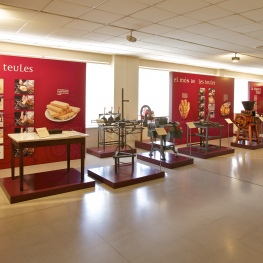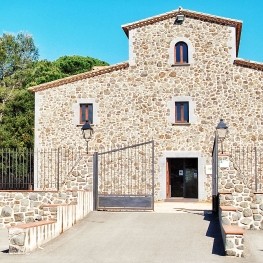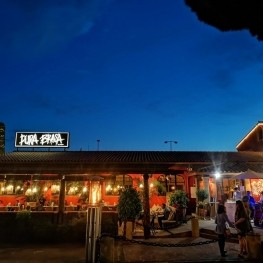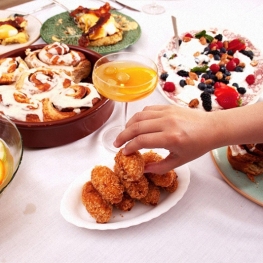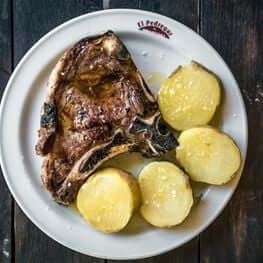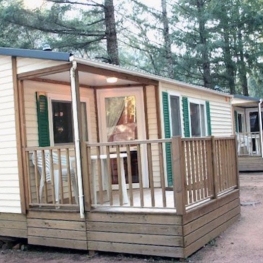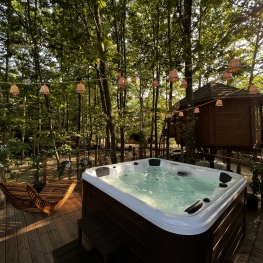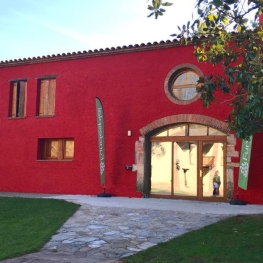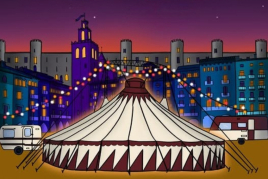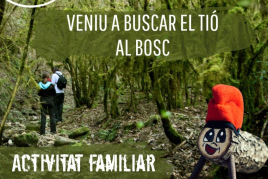The sweetest route through La Selva, a route for those with a sweet tooth
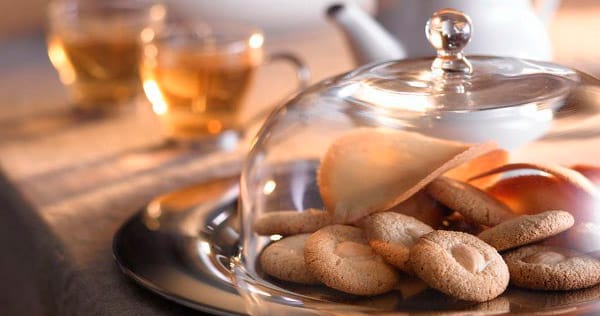
Surely the phrase from the French Brillat-savarin sounds familiar to you: "Tell me what you eat and I will tell you how you are". We could adapt it on this occasion and say: "Tell me what you eat and I'll tell you where you are."
Who has not been to any population and has been able to taste its typical product; be it a wine or a fish dish? Or who has never seen how the recipe for a certain cake is passed down from generation to generation?
It is evident that what we want to recommend to you this month from femturisme is a gastronomic route framed, exactly, in the Girona region of La Selva, which we can consider the sweetest region in Catalonia.
Route's villages
This is a circular route that runs through ten different towns and that links us to different pastry shops, where we will stop and discover their best specialties that reveal characteristic aspects of each town.
A fully recommended route for the sweetest and sweetest of the house!
The Rierencs; Cellerenian specialty
 The route that we present to you this month begins in Cellera de Ter and ends in Anglès, that is, almost at the same point, since they are neighboring towns.
The route that we present to you this month begins in Cellera de Ter and ends in Anglès, that is, almost at the same point, since they are neighboring towns.
La Cellera de Ter, which forms part of the eastern massif of Les Guilleries, is located 166 meters from the sea. Although, it is not a dry municipality since the river Ter and the riera d'Osor run through it.
The presence of the river Ter through the Cellera de Ter has influenced the identity of the municipality, in such a way that in this town a typical artisan biscuit known as rierencs is produced, since its shape is reminiscent of the stones of the river Ter.
This is the first sweet that we suggest you try to make your mouth water.
On a whim...
...following the current of the waters of Sant Hilari, entering the forests of Aabúcies and reaching the municipality of television, Breda.
 A little further up is the municipality of Amer where you can taste the capricis that are the best companion to visit the town.
A little further up is the municipality of Amer where you can taste the capricis that are the best companion to visit the town.
So are the rocs and ametllats. The first are cookies that commemorate the stones that allowed the construction of the Amer monastery and that you cannot miss.
From Amer we will continue towards Osor, following the Gi-542 road, to reach Sant Hilari Sacalm.
Surely it happens to all of us that when we hear this name, an image related to this town, water, automatically comes to mind. In fact, in the whole area of Sant Hilari there are a hundred sources of medicinal water, for this reason it is also called " the town of a hundred sources ".
 However, from now on we can associate another product with this population, the Fonts de Sant Hilari biscuits and the Aromes biscuits, some sweets that tell everything about Sant Hilari Sacalm and that really, as their name suggests, will make us remember the smells of this town.
However, from now on we can associate another product with this population, the Fonts de Sant Hilari biscuits and the Aromes biscuits, some sweets that tell everything about Sant Hilari Sacalm and that really, as their name suggests, will make us remember the smells of this town.
Also, Sant Hilari Sacalm has been called the capital of the Guilleries as it is surrounded by this massif. The well-known and legendary Catalan bandit " Serrallonga " lived in these natural landscapes, who worked in Can Tarrés (a house located in the Sant Hilari district ).
 The next stop to make is Arbúcies. To get there we will follow the Gi-550 road. In this very traditional municipality, framed in an idyllic and bucolic setting, you can have the typical pa de pessic sponge cake, which has been made since the 19th century. Imagine if the recipe for it is old.
The next stop to make is Arbúcies. To get there we will follow the Gi-550 road. In this very traditional municipality, framed in an idyllic and bucolic setting, you can have the typical pa de pessic sponge cake, which has been made since the 19th century. Imagine if the recipe for it is old.
Just 15 minutes from Arbúcies and descending at the foot of Montseny we find the municipality of Breda where we can savor the xerrics and ametllats in some corner of the town that locates us and reminds us of the scenes of the well-known series of Televisió de Catalunya, Ventdelplà.
Xerrics are crunchy biscuits that receive this name because they make xerricar les dents (make noises with the teeth). As for ametllats, these are also crunchy cookies made from the fruit from which the name comes, almonds.
Edible sand and rough stone in Riudarenes and Vilobí d'Onyar
As we have already said, gastronomy shows us characteristic elements of the region where it has been produced.
 In this case, if we continue along the Gi-552 road, we arrive in Riudarenes, a municipality that stands out for the presence of streams and sand, as its name indicates in the translation from Catalan, and where it is possible to confuse sorrencs with grains. of sand ( sorra ). These ( biscuits sorrencs ) are cookies made from hazelnuts that try to imitate this characteristic element of Riudarenes, which can be seen in many corners of the municipality.
In this case, if we continue along the Gi-552 road, we arrive in Riudarenes, a municipality that stands out for the presence of streams and sand, as its name indicates in the translation from Catalan, and where it is possible to confuse sorrencs with grains. of sand ( sorra ). These ( biscuits sorrencs ) are cookies made from hazelnuts that try to imitate this characteristic element of Riudarenes, which can be seen in many corners of the municipality.
On the other hand, in Vilobí d'Onyar, their cookies imitate the stone of the La Crossa volcano. This is a huge volcano that has the hermitage of Sant Llop in its crater.
The cookies, called tosquigets, are dark on the outside and crisp and colorful on the inside.
Vichy Catalán and the relationship with Caldes de Malavella
Caldes de Malavella is another interesting Selva municipality to visit and is included in this route.
 The Roman and medieval remains and the modernist and noucentista heritage that are preserved in this town allow us to take a journey through its own history.
The Roman and medieval remains and the modernist and noucentista heritage that are preserved in this town allow us to take a journey through its own history.
Likewise, Vichy Biscuits remind us of the construction of the Vichy Catalan Spa in 1898.
The opening of this building, which is in the neo-Mudejar style and which takes advantage of the thermal waters of the municipality, led to the arrival of the first tourists to the municipality.
If you are tired, perhaps you can consider the possibility of relaxing in these hydrotherapeutic waters with healing properties to gain energy and continue on the path later.
A modernist sweet with flowers from Farners
The route continues to Santa Coloma de Farners.
This municipality stands out for its cookies known by the name of teules that are made in the Trias Factory and that you can find in the Trias patisserie and in Tuyarro. Also in this town you can visit the Trias Cookie Museum, where they will explain the production process and the history of Trias Cookies.
 We recommend that once you are in this town, look up and see Farners Castle above the top of the wind. This castle has played a great role in the history of Santa Coloma de Farners and for this reason there are some cookies called Flors de Farners (flowers) in homage to the environment that houses the fortification. It is a very good memory to take away from this town!
We recommend that once you are in this town, look up and see Farners Castle above the top of the wind. This castle has played a great role in the history of Santa Coloma de Farners and for this reason there are some cookies called Flors de Farners (flowers) in homage to the environment that houses the fortification. It is a very good memory to take away from this town!
And with a full stomach and sweet tongue we will end up in Anglès.
This municipality, which is the last one that integrates this route, offers us the modernists. A fantastic sponge cake ( pa de pessic ) with more than a hundred years of tradition and that since then has been made in the same tin mold. Ideal to savor while admiring the Noucentista building and the Can Cendra farmhouse.
What to do
Museu Trias de la Galeta
Santa Coloma de Farners (a 5.2 Km)The Trias de la Galeta museum is the fruit of the Trias…
Museu de la Pagesia de Fogars de la Selva
Fogars de la Selva (a 10 Km)The Museum of the Peasant of Fogars de la Selva wants us…
Where to eat
Pura Brasa
Pineda de Mar (a 17.3 Km)A unique gastronomic experience: Pura Brasa is a friendly and fun concept…
La Calma, el Bellver
Tagamanent (a 21.4 Km)At the Masía Restaurante El Bellver, from 1:00 p.m. to 3:30 p.m.,…
L'Espai Gastronomia
Tossa de Mar (a 16.7 Km)Enjoy a place where laughter, festivity, and gastronomy unfold around a large…
Braseria Les Comes
L’Esquirol (a 19 Km)Located on the premises of the Anigami Adventure Park, they offer menus…
Where to sleep
Càmping El Pont de Barcelona
Vilanova de Sau (a 10.6 Km)The El Pont campsite is located in the heart of the Guilleries…
Càmping l'Alguer
Les Planes d'Hostoles (a 6.6 Km)The Alguer campsite seeks to give the best for you, since it…
Casa de colònies Els Porxos, Fundesplai
Vilanova de Sau (a 13.4 Km)Els Porxos is located in the Vilanova de Sau municipality. It is…


